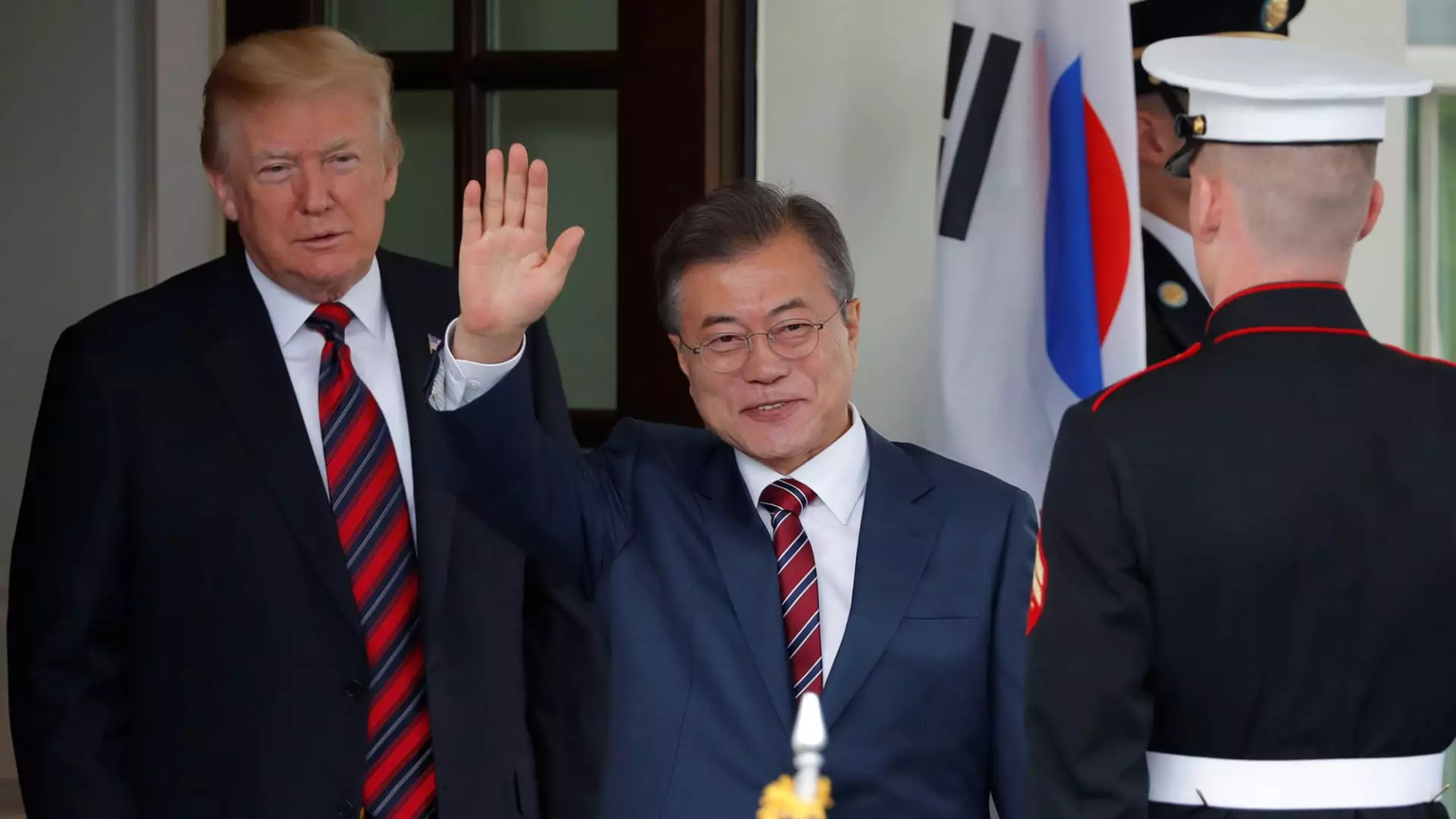In an era characterized by escalating trade tensions and the looming shadow of tariffs, the U.S. automotive industry stands to face significant challenges. President Donald Trump’s administration has threatened to impose higher tariffs on imports from various countries, with a particular focus on major automotive suppliers like South Korea and Japan. According to recent data, these East Asian nations accounted for a notable share of vehicle sales in the U.S., which raises questions about the long-term implications of these trade policies on the industry, consumer prices, and the overall market dynamics.
The statistics reveal that South Korea and Japan combined contributed 16.8% of vehicle sales in the U.S., with individual shares of 8.6% and 8.2%, respectively. This showcases the strategic importance of these countries in the U.S. automotive landscape, where import duties currently differ dramatically from those imposed on neighboring trade partners like Canada and Mexico. With the U.S. threatening tariffs as high as 25% on these regional allies, the question arises: how will automakers navigate the storm of potential price increases and shifts in consumer demand?
The rise of South Korean automakers, particularly Hyundai, underscores a pivotal shift in the automotive export landscape. Hyundai’s ascension to the position of the second-largest exporter of new cars to the U.S. spotlights its growing operational capacity and strategic efficiency. In stark contrast, exports from Japan have seen a decline, prompting further analysis of South Korea’s robust performance. Despite a historical 2.5% tariff rate on Japanese imports, the situation has largely favored South Korean automakers, allowing them to thrive in an environment with no import duties.
Hyundai’s export figures have risen dramatically, from fewer than 845,000 vehicles in 2019 to over 1.37 million in 2024. The implications are profound; while automakers like Toyota, Nissan, and Honda contend with a shrinking market share, Hyundai’s ability to navigate tariff-free trade has allowed it to strengthen its foothold in the U.S.
Potential Consequences of New Tariff Policies
With tariffs often perceived as an attempt to protect domestic industries, the effects can be multifaceted. Most notably, increased tariffs can lead to higher import costs for consumers, ultimately raising prices at the dealership and potentially dampening consumer demand for vehicles. Automakers, faced with increased operational costs, may have no choice but to pass these additional expenses onto buyers, further complicating the financial landscape for consumers already grappling with inflation.
The case of General Motors (GM) serves as an illustrative example of how corporations are linked to these developments. GM has ramped up its reliance on South Korean imports, with South Korean-produced models growing in its sales portfolio—an increase from 173,000 units in 2019 to more than 407,000 in 2024. This move highlights the critical need for companies to strategize amidst shifting trade policies and prepare for the uncertainty tariffs bring.
Industry Adaptation in the Face of Tariffs
Trade expert Terence Lau, dean of the College of Law at Syracuse University, noted the adaptability of the automotive sector. While the industry may struggle to pivot to new dynamics swiftly, it can indeed reposition itself to meet consumer demands over time. It is crucial to recognize that tariffs can act as a “nuisance,” yet once they surpass the 10% mark, they can significantly erode profit margins and product viability.
Ford’s CEO, Jim Farley, articulated a vital perspective, emphasizing the need for a comprehensive tariff strategy that encompasses all automotive importers rather than selectively targeting specific countries. This approach would ensure a level playing field, enabling American automakers to compete more effectively against their foreign counterparts. By addressing the broader landscape of trade relations, the industry may better safeguard its interests amidst the tariffs’ shifting tides.
The implications of potential tariff implementations extend far beyond immediate price adjustments and consumer behavior; they could redefine the competitive structure of the U.S. automotive industry. The uncertainty surrounding trade policies inevitably creates a challenging environment for automakers, compelling them to reassess their operational strategies and supply chains.
As President Trump prepares to unveil comprehensive tariff proposals, the stakes for South Korea and Japan remain high. While Republican leadership hints at possible exemptions for vital sectors like automotive manufacturing, clarity in the forthcoming trade policies will be essential for industry stakeholders to navigate the looming uncertainty. The automotive industry must remain vigilant and proactive in adapting to a landscape fraught with volatility and complexity.

Leave a Reply